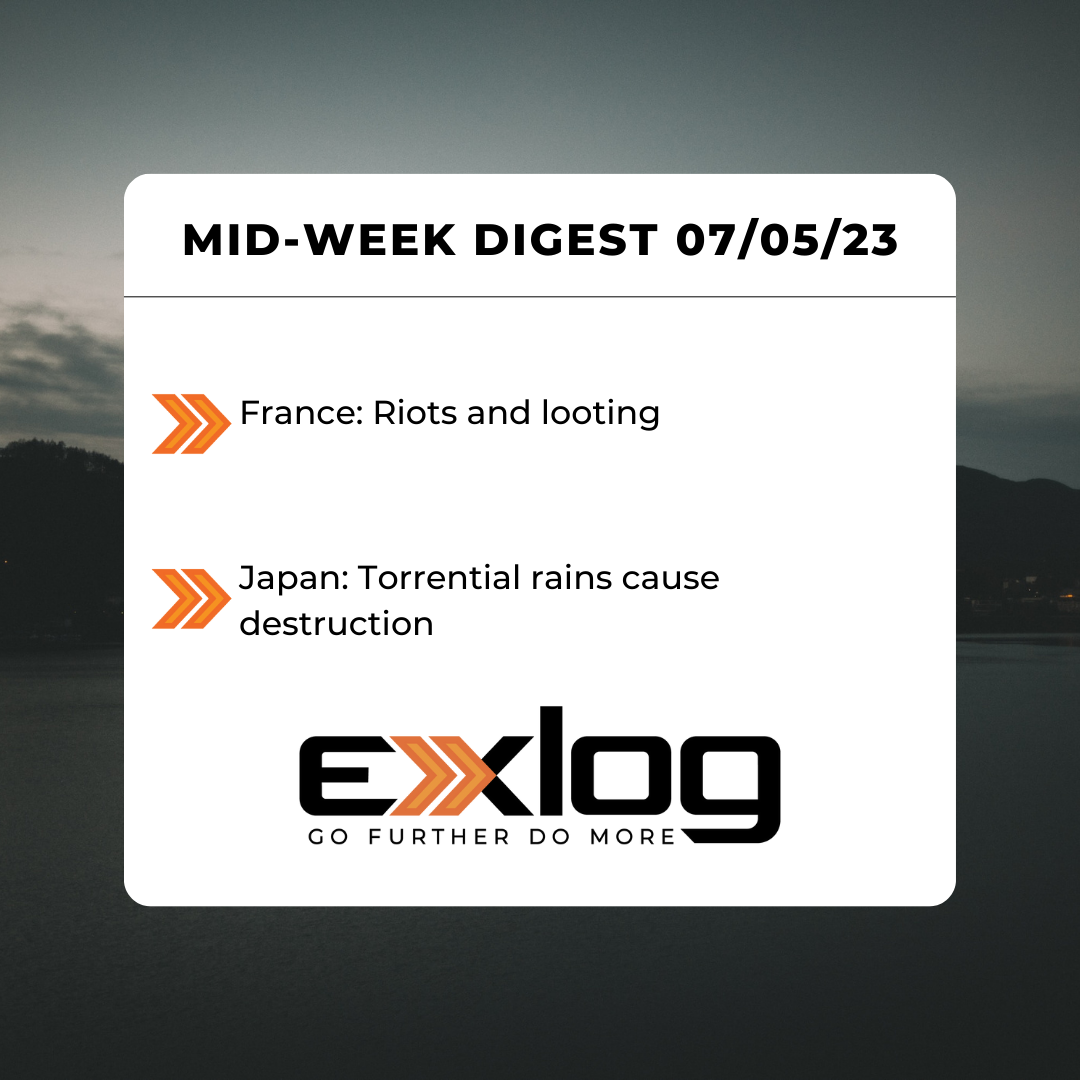Riots and looting across France and heavy rains in southern Japan
France: Nationwide riots subsiding amid increased security
A wave of widespread, violent unrest over a fatal policing shooting in a suburb west of Paris on June 27 has begun to subside following a strong security response by French authorities. Anger at French police led to clashes with security services and acts of vandalism targeting police and municipal government facilities. Thousands of individuals have also engaged in rioting and looting across at least 220 French cities and towns. More than 750 shops, supermarkets, restaurants, and bank branches were looted or severely damaged in the initial days of the riots, leading authorities to deploy 45,000 additional security personnel across the country to restore order. As of July 5, at least 500 officers have been injured and more than 2,000 individuals – predominantly young men – have been arrested. Numerous bus, tram, metro, and Regional Express Railway (RER) lines were suspended in Paris and other major cities, though service has begun to normalize. Numerous municipalities have also enforced overnight curfews in an effort to discourage unruly demonstrations; most were set to expire July 3 or 4, but evening movement restrictions for minors remain in place in a handful of locations, particularly near Paris. The riots were incited by the June 27 police shooting of a 17-year-old of Arab descent in the Parisian suburb of Nanterre, which exacerbated the long-held perception of police brutality and discrimination against ethnic minorities in France. In addition to the riots, protesters have taken to the streets across the country calling for justice and police reform. The recent unrest – which caused an estimated EUR 1 billion in damage – follows months of large, disruptive strikes and protests against pension reforms that had already led to a 20-25% reduction in Paris tourism and a nationwide economic downturn. While further protests and isolated clashes related to the June 27 incident cannot be ruled out, the declining numbers of arrests and lifting of many overnight curfews suggest that the current wave of violence has mostly subsided as of July 5.
Japan: Torrential rains cause destruction, disruption in southwest
Heavy rainfall on the southwestern Japanese island of Kyushu has led to destruction and service disruptions, and created lingering conditions for landslides. Storms began on July 2 over Kyushu and parts of western Honshu, causing several rivers to swell and overflow their banks. Some of the heaviest precipitation was recorded in the Kumamoto Prefecture towns of Mashiki and Yamato – where intense flooding caused the collapse of a 37-meter (121-foot) bridge – breaking July rainfall records in both locations. Widespread power outages were reported, and 360,000 residents were placed under an evacuation order in the capital city of Kumamoto. Kyushu Island has also experienced significant transport disruptions due to heavy rainfall and flooding, including train and bus service suspensions that interrupted transit between major cities such as Fukuoka, Oita, Kumamoto, Miyazaki, and Kagoshima. Meanwhile, in Honshu’s Yamaguchi Prefecture, intense flood waters reportedly washed away multiple vehicles. Despite these impacts, reports from both Honshu and Kyushu show that casualties remain low, with only one person confirmed dead after a man was found in a washed-away vehicle. Japan Meteorological Agency advisories indicate that the front of heavy rainfall will continue moving south across the country through early July 6 (local time), bringing up to 200 mm (7.9 inches) of additional precipitation across Kyushu and Yamaguchi Prefecture. They also warn of an elevated landslide hazard due to the loosening of soil caused by the record-breaking rainfall. Despite the imminent passage of the storm system away from Japan, forecasted heavy rains and the lingering hazards of flooding and landslides are highly likely to cause persistent disruptions to travel and utilities in the days ahead.


